This will be a long post, but this is pretty much the nuts and bolts of how we teach language using a Montessori approach, including how/when we transition away from Montessori materials. I have broken the post down into approximate age ranges, but it’s a continuum and each child has moved through at their own pace. Enjoy!
Birth through Three
Mostly we read a lot of books! I look for classics/award winners that have been reprinted into board books although others sneak their way in. The one shelf material I use in this age group is picture cards. I have two sets from Discount School Supply- animals and foods. They are all photographs, not cartoons.
We use these for everything from naming, matching to real objects, sorting (food groups, land/water animals, etc), and even animal sounds. These are a great material to have available for older kids to help out with the younger ones. Earlier this week, Lucie was looking through the pictures with Aidan and you can see how she invented her own use for the card.
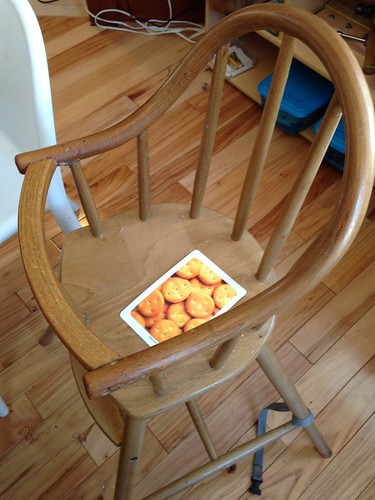 |
| She ran away with the cracker card and put it on her chair. |
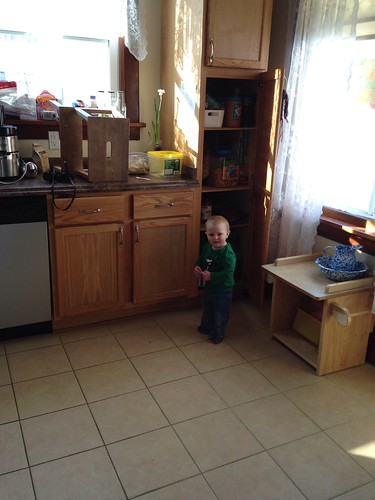 |
| Then ran to the cupboard- notice the “more” sign |
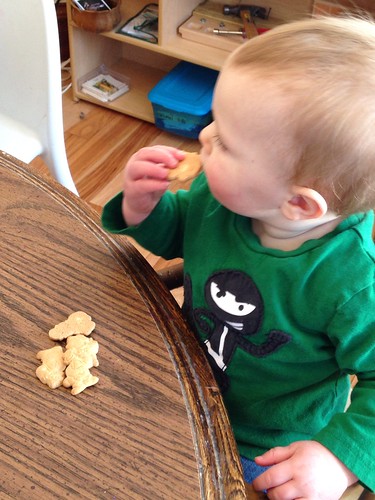 |
| What else could a mom do? |
Three through Six
Technically all of the 3-part cards in other subject areas are related to pre reading language and visual matching of pictures and words. I don’t really consider those as part of language, however, and won’t talk about them here. There are no sets that I think need to happen at specific times or that I think the curriculum would be lost without. In the Montessori literature you will also read a lot about I-Spy and other sounds games as early language activities. Again, I don’t really consider these here because they are more things we just point out in daily life. Rhyming, sound a like words, memorizing short poems/prayers, etc. all happen through life. I don’t present them separately. I’m sure that makes some people cringe, but I have three readers at my house (all of whom do know what a rhyming word is) and obviously we’ve done just fine without special instruction in this area. We continue to read out loud lots and lots, adding in more nonfiction at this age range. Of all my kids, Logan is the most fascinated with non-fiction. Just can’t get enough!
I don’t have the metal insets, but I do a similar set of pre- writing activities using the infant/toddler shape puzzles. We do tracing and then I have a binder ring with various ways to fill in the shape. I usually present this around 3.5 years shortly before starting the sandpaper letters and work continues throughout this age range.
Somewhere between three and four we start with the sandpaper letters. I look for an increased interest in letters in the environment and use that as my indicator that we are ready to start. We have used the
Words Their Way curriculum for many years as a spelling, writing, sound, etc supplement to our curriculum and it has been hands down the best investment I have made into our language curriculum. This winter I (with lots of help from everyone else) have gone to the next level and made permanent reading and spelling drawers by copying the sorts, coloring them when applicable, and then laminating them. This speeds things up quite a bit and allows me and the kids to quickly and easily see where they are in their work.
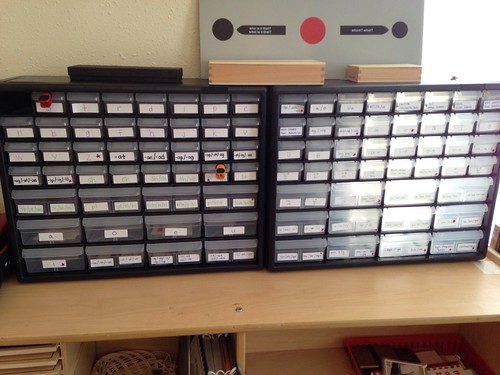 |
| The letter name alphabetic and within word levels of Words Their Way into individual drawers |
Matching with the sandpaper letters, each letter has a sound drawer with 5-6 pictures of objects beginning with the key sound. The curriculum has the sounds individually in the emergent level and then mixed in letter name alphabetic. I took the LNA sorts and pre sorted them so they can be used individually as letters are introduced and then two or more at a time as sound sorts to discriminate between sounds. I like being able to do this based on when I notice that someone is struggling with a couple key letters I can very quickly pull out those drawers for review.
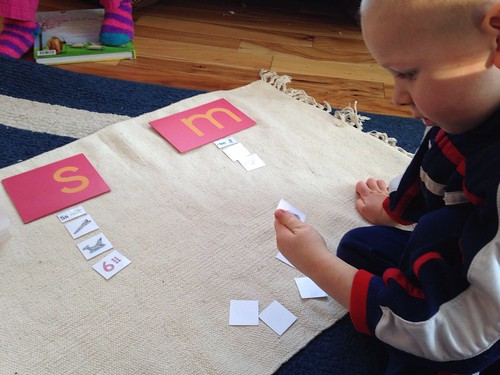 |
| Single sandpaper letters with an individual sound drawer |
The reading/spelling drawers are used in tangent with the sandpaper letters (single then double) and then the moveable alphabet for what I feel is a more than adequate approach. After the single sounds, the student moves into double sounds and word families providing lots of opportunities for building spelling and writing developmentally in a similar sequence as the Dwyer cards are designed (albeit not for exactly the same purpose). I still have the Dwyer cards, but I’m really close to giving them up completely as they seem redundant and these get more use. Overtime I have completely stopped using the pink-blue-green reading series.
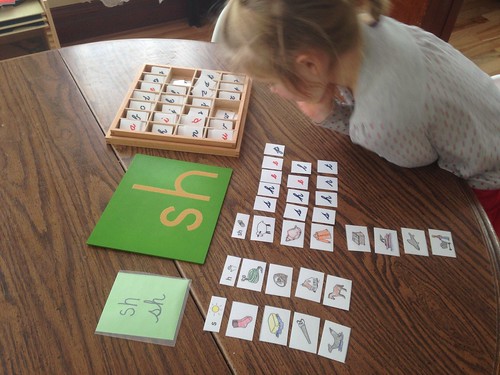 |
| Digraph sort used with double sandpaper letters and moveable alphabet |
In my experience, my three through six year olds generally master through the first cabinet on the left. You can see where Kylee is right now (orange clip) and she is moving quite quickly because much of it is review and rules she has already picked up on her own. Throughout the levels, WTW transitions from pictures to pictures and words and then finally to words only (see example below).
In addition to the individual sounds, this first set includes blends and digraphs, word families, and discriminating between short vowel sounds. This is about the same time that reading fluency starts to build and I see more spontaneous attempts at words that aren’t in the sort. The more they sort and spell with the moveable alphabet the better they read and write.
You may be able to see that every few drawers there is a star on the label. Those are the spots that WTW has built in spelling assessments. They aren’t spelling tests but can be a good way to quickly assess if the child has mastered that section and is ready to move on. Sometimes I use them, sometimes I don’t.
As beginning readers go I have used a variety, checked many out from the library, and mostly find they have a short life span right at the beginning of independent reading. What we have cut down to, and use most, is the Catholic Heritage Curriculum readers (but not the rest of the curriculum- I laminated the readers to make them last through lots of handling) and the Usborne Very First Reading series. I like these because they are a shared reading experience, with parent print on the left and larger kid words on the right. They move quickly through rules though, so can only serve as a supplement not as a curriculum backbone in my opinion. The CHC readers go more slowly through new rules and sounds.
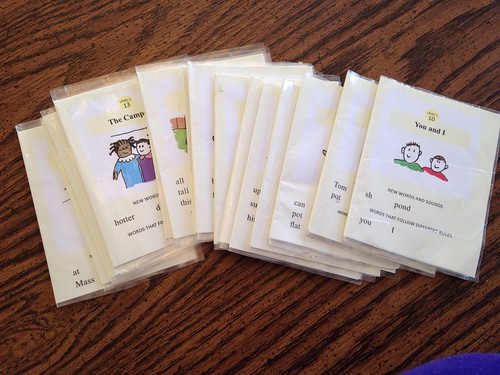
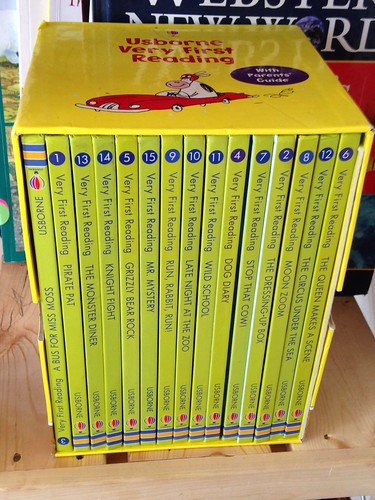
Six through Nine
Once the child has mastered roughly the first set of drawers and is beginning to really read independently, I begin to introduce the grammar word types and symbols. I am still working on the best way to organize my “boxes” because I don’t have the actual grammar boxes as they are commercially available… simply an envelope with words and phrases for identification that are sequentially appropriate to what word types have been introduced. For example, first is just the noun/article and then noun/article/adjective. We use the grammar symbols to chart the word types and make our own dictionary/booklet at this age of each word type. We have a box of paper symbols which are ok, but I recently ordered a stencil because I think it will be better. Maybe someday I will order wooden symbols, but honestly I introduce all of the word types and then mostly leave it at that so I don’t think I would really use them.
I have done a mix of cursive and print, based on what seems best for each child. I will say the younger I introduce cursive the more they seem to enjoy it and the less trouble they seem to have going between the two. As writing builds, I have done some work with the sentence analysis charts, but I think I could take them or leave them. The kids seem to accept the work but it neither inspires or particularly challenges them most of the time. The same goes for working with a grammar farm or other miniature environment. I’ve seen some pretty neat things in other places and wonder if I should encourage this more, but so far haven’t seen the results when I did and I’m not sweating it at this point.
At this age, reading and spelling continue to build with Words Their Way. The second set of drawers takes longer to complete. These sorts build on all of the long vowel rules, diphthongs, all of the r driven vowels (short and long), contractions, and some high frequency words (beginning with a- and be-). Most of the sorts can be built more than one way. This is the sort for mixed short vowels (one of the early second level sorts) with beginning digraphs. First sorted by vowel sound and then sorted by digraph. These words can be practiced as reading practice, spelled with the moveable alphabet, illustrated, used as story starters, or quizzed on like any other spelling list depending on the child’s learning style.
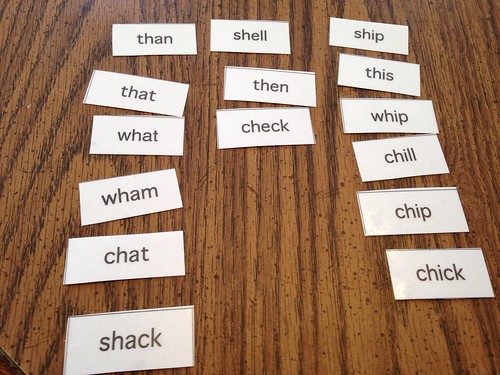
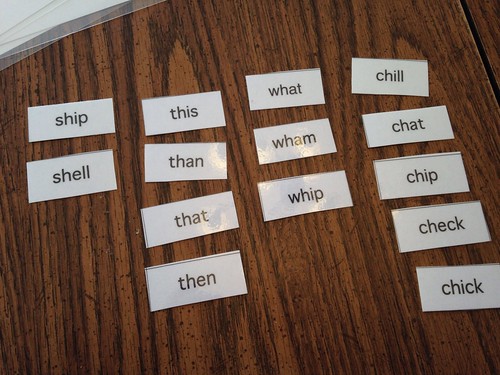
Nine through Twelve
Towards the end of the second plane of development in a Montessori classroom, the students would be actively engaging in literary circles to read, evaluate, and discuss a variety of literature. This is a little tricky to do when you have readers in all different places and developmental understandings. One of the ways I have addressed this is by using the reading comprehension packets available through Catholic Heritage Curriculum. Beginning in 3rd grade, they have a few books available for each year and I find the price to be about right for what I’m looking for. Just something to make sure that we are really reading for understanding with an opportunity to practice a little bit of critical thinking (although this depends on the packet, some are better than others).
I also start to assign more independent reading for subjects like history and geography that previous had been done primarily out loud. For example, Aidan was doing a hymn study on Ode to Joy and I had him check out a Beethoven biography from the library and required it as part of his research. Much to my children’s chagrin, I do not allow all (or even the majority) of their research information to come from Mr. Google!
As for other language work, this is more of something that we use in other subjects than study specifically. Most writing is not writing for the sake of language or grammar, but for the sake of communicating something else they have learned. Aidan does use the Catholic Heritage Language of God workbooks because he has lots of holes in his language skills. It’s an area he struggles and we are working to bolster some of the basics so hopefully writing (composition) will become a little less tedious for him.
Words their Way continues with Syllables and Affixes, which I have to admit I haven’t had anyone make it to yet. Maybe now that I am more organized with the sorts…. There is still another level, Derivational Relations, which is designed to be completed around middle school and then an advanced vocabulary curriculum level beyond that.
Looking Beyond
As anyone who has studied Montessori already knows, there isn’t much of a method for past age 12. Mostly there is a basic philosophy that others have expanded and built upon to become what we know of as the Montessori ErdKinder experience. This is a very social and community aware stage of development and as I think about how that will look for language, I imagine sticking pretty close to a literature track through middle school and high school. Studying various time periods and genres. In terms of writing, I want all of my kids to graduate high school knowing how to write a fluid five paragraph essay. I firmly believe this can be the backbone of every single style of essay writing out there and if they can do that, they can figure out the rest!
And that brings us all the way to the end- my language approach/philosophy for birth through the end of high school! I’m not sure which subject I will approach next but I’m thinking it will be history, geography, or science. We have a lot of overlap between the three subjects here so I’m not entirely sure how to present it without being completely overwhelming! I’m not even sure where the lines are.
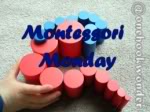






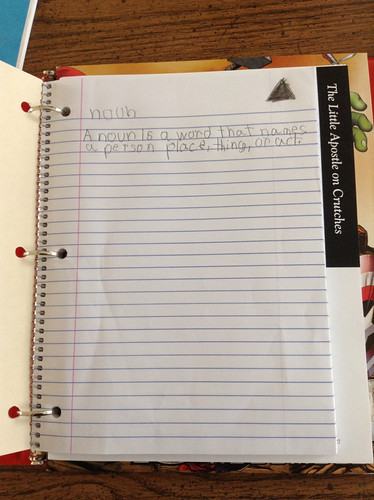


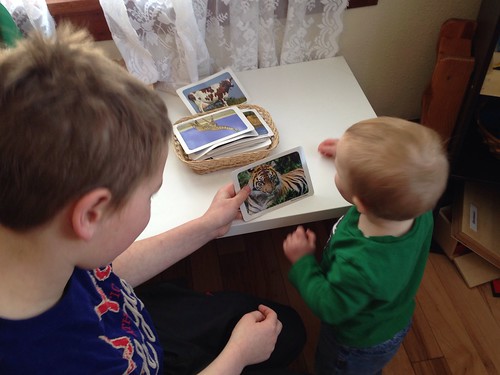
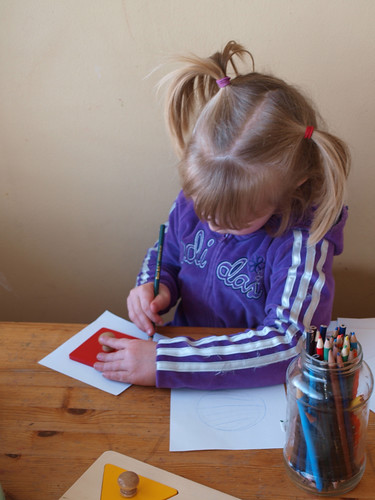
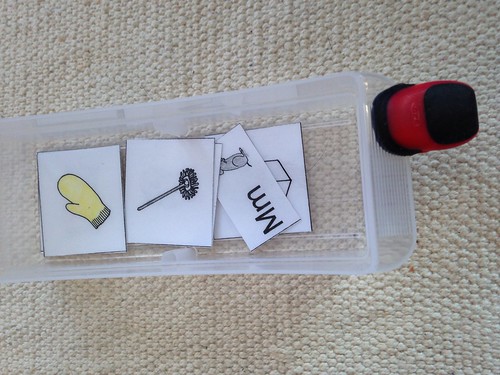





Recent Comments